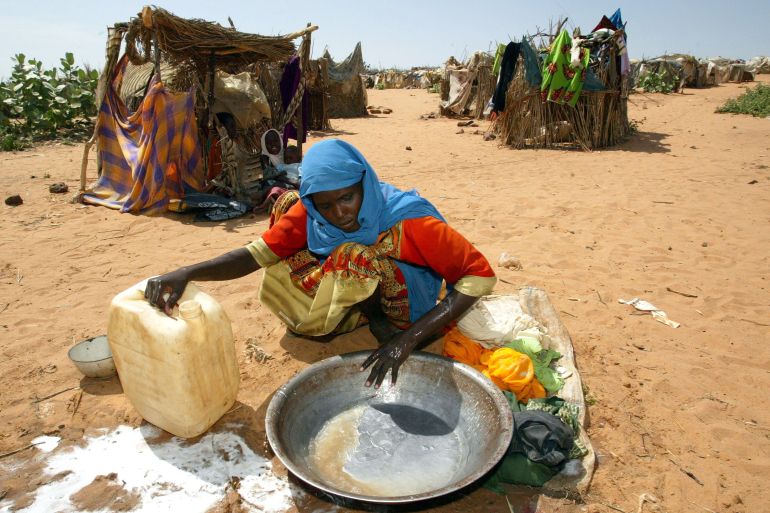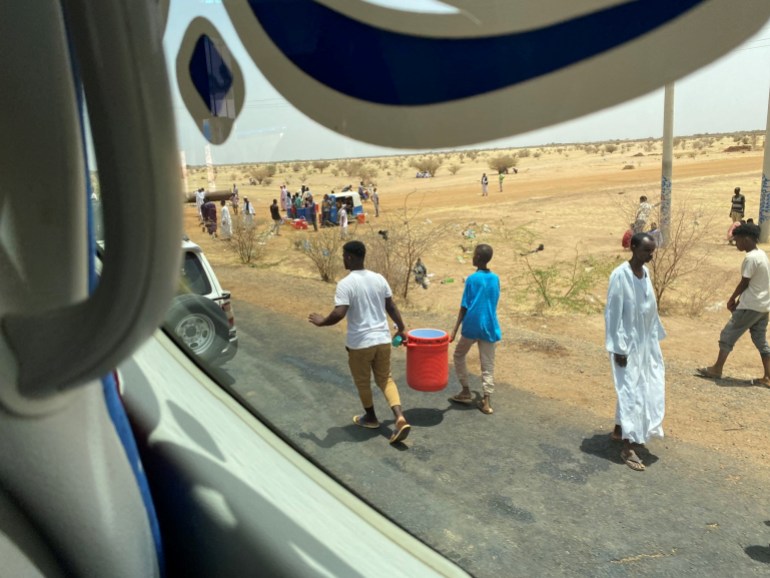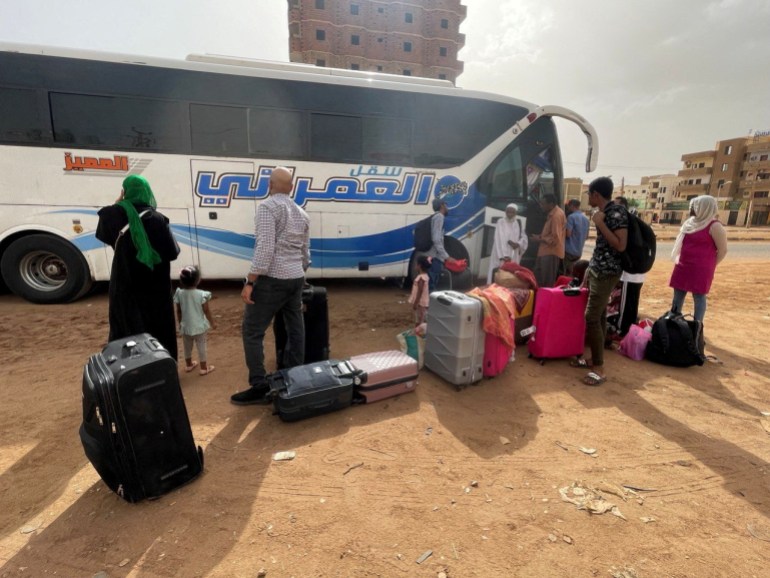Humanitarian fears as thousands of Sudanese flee to Chad on foot
UN estimates 100,000 people will flee Sudan conflict to Chad, which already hosts more than half a million refugees.

Tens of thousands of people fleeing violence in Sudan are spilling into Chad, with aid agencies warning that larger flows of refugees are expected to arrive.
Since fierce fighting broke out in Sudan on April 15, an estimated 20,000 people have entered Chad and at least 100,000 are set to arrive, the United Nations said on Tuesday, raising concerns about the stability of a fragile region.
Keep reading
list of 3 itemsSudan fighting in its 12th day: A list of key events
Ousted President al-Bashir in Sudan military hospital, army says
The conflict has pitted army chief Abdel Fattah al-Burhan against Mohamed Hamdan “Hemedti” Dagalo, the head of the paramilitary Rapid Support Forces (RSF) and al-Burhan’s deputy in the military’s Sovereignty Council that has been running the country since the October 2021 coup. More than 400 people have died so far.
While the most intense fighting has been taking place in the capital Khartoum, battles have also spread to Sudan’s western region of Darfur, reviving memories of the 16-year-long conflict, in which 300,000 people were killed. Back then, rebels fought against the government of President Omar al-Bashir and the Popular Defence Forces – called “Janjaweed” by the rebels – which later evolved into the RSF.
Lying on Darfur’s western border, Chad has reported the highest number of refugees from the Sudan conflict compared with other neighbouring countries, according to the UN.
“They arrive exhausted and in a state of panic after they left behind all their material and financial assets,” said Idriss Mahmat Ali Abdallah Nassouri, head of Chad’s National Commission for Reception, Reintegration and Returnees (CNARR).
Most of the refugees have come from the towns of Nyala and El Geneina, the capital of West Darfur, where the fighting has been more intense, Nassouri said, adding that most are now staying in Chad’s eastern provinces of Ouaddai and Sila.
“The number of arrivals is increasing by the thousands and is worrying,” Nassouri said, noting that resources were straining to assist the 600,000 refugees, spread across 13 camps in the country’s east, who were already living in Chad before the latest crisis in Sudan erupted.

The CNRR, along with the UN refugee agency (UNHCR), began pre-registering incoming civilians to Chad on Monday, identifying urgent needs and assessing whether new camps were needed, or if families could be relocated to pre-existing reception centres.
Meanwhile, UNHCR has said that it has rushed basic items, from sleeping mats to water, to villages close to the borders.
Aid workers operating at the border described receiving mostly women and children who had been walking for more than two days, carrying nothing more than their clothes and a little food.
“The need is huge,” said Alpha Koita, Chad’s chief mission of Premiere Urgence Internationale – a French NGO operating in Chad. “They are mostly women and children coming with nothing, they have left everything behind,” he said as his team deployed a mobile hospital in Adre, a town in Ouaddai.
“We need water, as access to it was difficult – even before the conflict; we need shelters, as people are sleeping under trees, and infrastructures for potable water and latrines to avoid diseases, such as cholera,” Koita added.
Timing is also not favourable, as the rainy season is due to start in June, which will further hamper humanitarian assistance and put locals and refugees into competition for already-scarce resources.
“If the conflict in Sudan continues we will also see an increase in large-scale banditry and inter-ethnic conflict,” Koita added.
Aid agencies were also concerned about their capacity to provide support to the new wave of refugees: “Services are already overstretched to support those who are already there and funding shortfall is critical to our capacity to assist new refugees,” said Eujin Byun, a spokeswoman for the UN refugee agency. Since the start of the year, only 15 percent of the budget needed to assist displaced people in Chad has been funded.

But while Chad has seen the most significant border crossing so far, due to Darfur’s proximity, aid workers have warned that civilians even further away will be affected.
“We need to be prepared in South Sudan, Ethiopia and Egypt … People will be moving; it’s going to take longer, but they are going to start arriving,” said James Curtis, executive director for East Africa at the Danish Refugee Council. “This is only going to get bigger and greater as the crisis intensifies,” Curtis added.
Sudan is home to 800,000 South Sudanese refugees, a quarter of whom live in Khartoum, now pounded by gunfire and air raids.
South Sudan was formerly a part of Sudan, but gained independence when a decades-long civil war ended in 2011.
So far, 4,000 South Sudanese have crossed into their home country, mostly through the Renk border crossing point in Upper Nile State, but there has been “a daily increase” in arrivals, read a UN memo. Arrivals have mostly used transport to reach the border, but a large number of South Sudanese are expected to reach the crossing on foot.
The consequences of a significant number of people forced to return to South Sudan, a country plagued by an enduring ethnic conflict that has left almost three-quarters of the population in need of humanitarian aid, were already worrying aid organisations.
“The humanitarian impact of this crisis will be harsh,” read a UN report released on Tuesday.